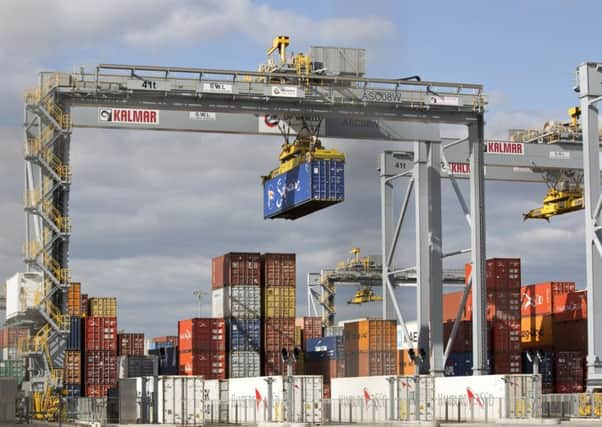Catherine CA Truel: Customs agencies will need resources to adapt to Brexit


Scottish companies in sectors such as oil and gas, electronic or aerospace are competing in EU markets where next day or even same day deliveries are standard practice. E-commerce businesses across Scotland sell via their websites all over the EU. It is therefore critical to limit disruptions at the future UK/EU border by ensuring that the appropriate resources are allocated to customs authorities.
In the UK, 96 per cent of import declarations and over 99 per cent of export declarations are cleared within 20 seconds.
Can this performance continue post-Brexit?
Advertisement
Hide AdAdvertisement
Hide AdIn EU trade, “import” and “export” only refers to trade with non-EU countries. It doesn’t apply to intra-EU trade because there are no customs formalities for intra-EU movement of goods. Goods are simply shipped in the EU in the same way they are shipped across the UK without, for most goods, any customs declaration.
After Brexit, UK trade with EU countries will become imports and exports. Companies currently only dealing with EU customers or suppliers will need to submit import and export declarations for each shipment and comply with customs regulations. In practice, whatever the framework of the relationship between countries, a trade agreement, customs union or any other scenario; whether subject to duties or not; imports or exports are normally controlled with a customs declaration.
HMRC estimates that the total number of customs declarations could undergo a fivefold increase from 60 million per year to 300 million. In addition, HMRC is facing the challenge of adapting their own systems. Beside the current change of IT system for customs declarations, HMRC operates 56 systems at the border. They estimate that 24 of them may require change to be ready by day one in less than 24 months.
There is, therefore, a risk of a bottleneck at the UK/EU border if customs resources, that are already tight, don’t meet the increased volume and workload.
Customs authorities will need human, systems and infrastructure resources to handle such a volume of transaction, from truck parking facilities at the border to technical expertise.
In modern global trade, imports and exports are interlinked and complementary. Goods are often produced by combining local, national and international materials, labour and services to then be delivered to global markets.
The role of customs authorities has evolved over the years from guarding the border to managing international trade. Any inefficiency at the border is resulting in production lines waiting for materials and repairs waiting for components.
And let’s not forget that a border has two sides. It is not just about the UK, EU countries must also be ready to face an increase in transactions. Border agencies on both side of the border must have the appropriate resources to avoid disruptions to trade.
Advertisement
Hide AdAdvertisement
Hide AdCatherine CA Truel is CEO of Alegrant, an award-winning start-up which is developing a global platform designed to address the problems of customs clearance, border delays and import/export regulations.